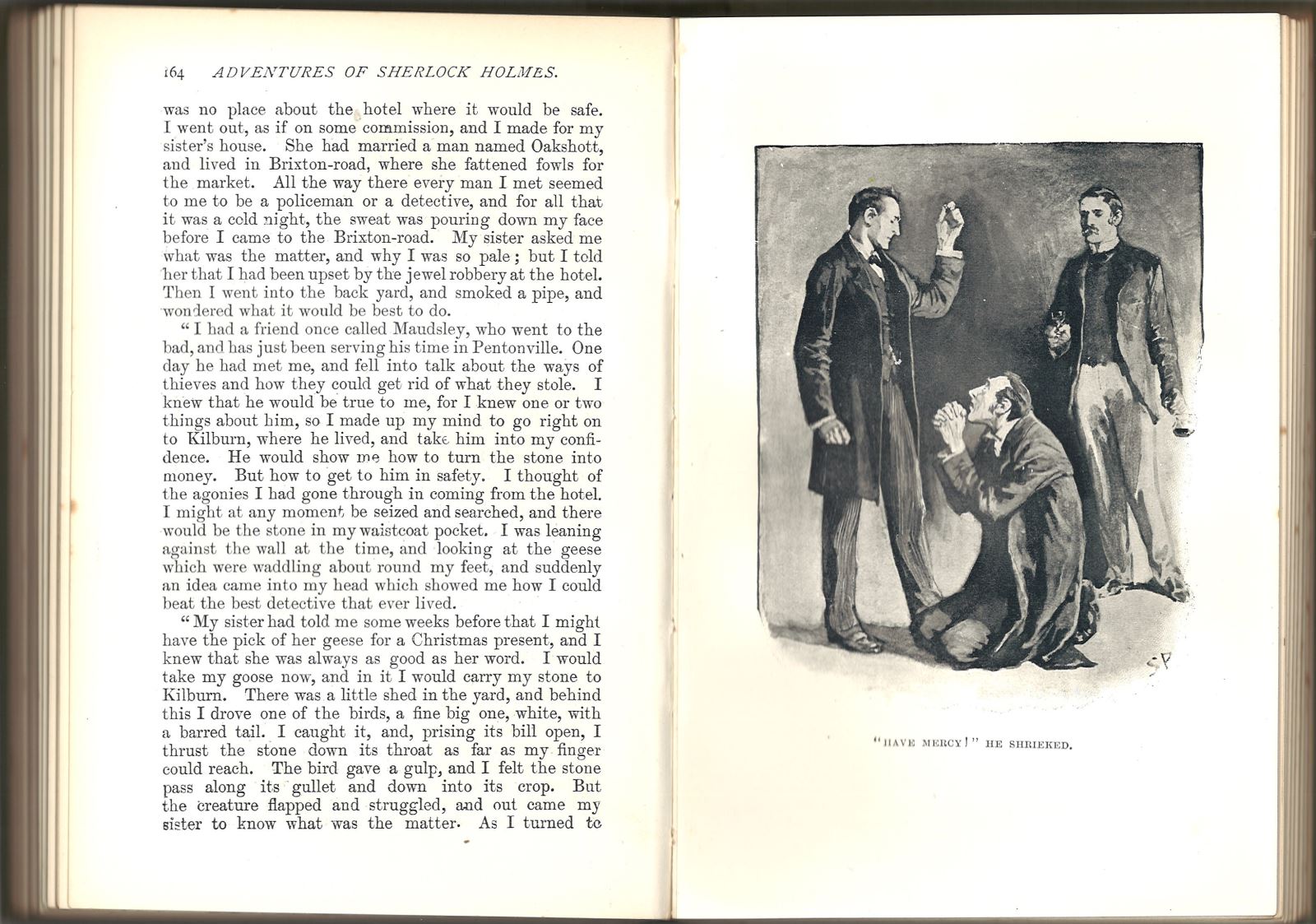A Goose And A Precious Stone.
The Adventure of The Blue Carbuncle is unique in the Sherlock Holmes Canon in that it is the only story that is set during Christmas. (Though strictly speaking it occurs two days after the festivities.)
The Blue Carbuncle was first published in The Strand Magazine in January 1892. It was later published in the collection, The Adventures of Sherlock Holmes. The story has since appeared in a number of anthologies - especially those with a Christmas theme.
Arthur Conan Doyle has Doctor Watson call on Sherlock Holmes with, “…the intention of wishing him the compliments of the season.“ Holmes is contemplating a battered old hat that is the lost property of one Henry Baker. A Christmas goose was also found with the hat. These have been passed on to Sherlock Holmes by the Police Commissioner, Peterson.
Peterson takes the goose home to be cooked while it is still edible. However, later that morning he bursts into Sherlock Holmes’ rooms. Peterson’s wife has found a precious stone in the crop of the goose. Doctor Watson describes this treasure trove as:
“…a brilliantly scintillating blue stone, rather smaller than a bean in size, but of such purity and radiance that it twinkled like an electric point in the dark hollow of his hand.“
The precious stone is none other than the Countess of Morcar’s blue carbuncle. This had gone missing from the Hotel Cosmopolitan five days earlier. Sherlock Holmes outlines the back story of the blue carbuncle to Doctor Watson:
“There have been two murders, a vitriol-throwing, a suicide, and several robberies brought about for the sake of this forty-grain weight of crystallised charcoal.“
Henry Baker is innocent of any wrongdoing with regard to the blue carbuncle. However, the police arrest John Horner. Horner is a plumber who is employed at the Hotel Cosmopolitan. The rest of the story is concerned with Sherlock Holmes’ efforts to clear John Horner and bring the real culprit to book.
When he eventually does this, Sherlock Holmes dispenses his own form of justice by letting the first time criminal go free. As Holmes says to Doctor Watson:
“I suppose that I am commuting a felony, but it is just possible that I am saving a soul…Send him to gaol now, and you make him a gaolbird for life. Besides, it is the season of forgiveness.“
So much for the story. But what of the blue carbuncle itself - is there such a precious stone? Well it seems not. The valuable gemstone was probably a fictional one from Arthur Conan Doyle’s imagination.
The term carbuncle formerly meant any red gemstone - primarily a garnet or ruby. These were cabochon-cut, giving them a rounded, convex, and polished surface. The modern gemstone Almandine is often known as a carbuncle. Among its variety of colours is a shade of blue.
The Adventure of The Blue Carbuncle was adapted as a silent short film in 1923. One of the Stoll film series, it starred Eille Norwood as Sherlock Holmes. The actor Peter Cushing portrayed Sherlock Holmes in the 1968 BBC television series, Sir Arthur Conan Doyle’s Sherlock Holmes. The Adventure of The Blue Carbuncle is one of only six surviving episodes from the series. In 1984, the story was adapted for the Granada Television series, Sherlock Holmes, with the actor Jeremy Brett in the title role.
There have also been a number of radio adaptations of The Adventure of The Blue Carbuncle. It was one of The New Adventures of Sherlock Holmes. First broadcast in 1940, it starred Basil Rathbone as Sherlock Holmes, with Nigel Bruce as Doctor Watson. In 1954, a BBC radio adaptation featured John Gielgud and Ralph Richardson in the same roles. Later in 1991, the story was one of the BBC Radio 4 dramatisations of the complete Sherlock Holmes stories. Clive Merrison played Holmes, and Michael Williams was the faithful Doctor Watson.
So during this festive season let us all raise a glass and toast Sir Arthur Conan Doyle. He was a truly gifted writer who continues to entertain us still today.
END.

Related
Comments
Comments are disabled for this post.

 to add an item to your Itinerary basket.
to add an item to your Itinerary basket.





